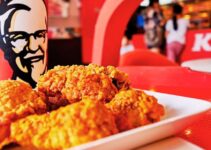Uber is a ride-sharing, food delivery, freight, and transportation service providing American multinational company. Travis Kalanick and Garrett Camp founded the ride-sharing and technology company in 2009; the company is operating its business in 11500 cities in 70 countries across the world. Today, we’ll discuss the value chain analysis of Uber supply chain analysis; primary and supporting activities in the process of value chain analysis Example Company. They are inbound and outbound logistics, operations, marketing, and customer service; infrastructure, HRM, technology, and procurement as an application of the value chain analysis process.
Subsidiaries of Uber
- Uber Eats
- Careshare Uber
- Postmates
- Drizly
- Cornershop
- Careem
The Value chain analysis of Uber supply chain analysis would analyze the primary and supporting activities in the process of value chain analysis. They’re inbound and outbound logistics, operations, marketing, and services; infrastructure, HRM, technology, and procurement. Here’s the supply chain analysis of Uber value chain analysis company example as follows;
Value Chain Analysis of Uber
Let’s discuss the primary and supporting activities involved in the process of value chain analysis of Uber supply chain analysis. It is an application of value chain analysis based on Porter’s model; some of the key elements and components of value chain analysis are as follows;
Primary Activities of Uber
The primary activities are directly involved in the production of products and goods and adding value to the ride-sharing and tech company. Some of the five main primary activities in the value chain analysis of Uber supply chain analysis are as follows;
Inbound Logistics of Uber
I-Large Suppliers Network
Uber doesn’t have ownership of any vehicle; it belongs to drivers, independent contractors, and vehicle rental companies. The drivers should have a smartphone and the Uber mobile application to connect with the customers and the company. The tech and ride-sharing company is following a unique internet-based business model, and it requires a limited infrastructure to manage its operations.
II-Suppliers Diversity
Uber collaborates and partners with a diverse range of suppliers and vendors. While selecting the suppliers, the company prefers to partner up with the following categories of people;
- Minorities
- Women
- LGTQS
- Veterans
- Disabilities
III-Suppliers Code of Conduct
Uber has set up a strict code of conduct for suppliers to ensure their compliance with human rights standards and regulatory requirements. It comprises of following elements;
- Anti-discrimination and anti-harassment
- Human rights and labor
- Freedom of association to any union for collective bargaining
- Standard compensation and working hours
- No conflict of interest
- Compliance with trade laws and regulations
Outbound Logistics of Uber
Uber has established a very large network of drivers and delivery service providers. According to an estimate, the tech company is operating its transportation and delivery service business in 10500 cities in 70 countries across the globe. The brand has various ridesharing subsidiary brands operating their business in different countries under different brand names. It shows the company’s strong commitment to the company.
Operations of Uber
I-Mobile & Ride
Uber has a highly advanced mobile application and it allows drivers and customers to connect with one another in over 10500 cities across the globe. They have the option to choose their required location and negotiate the price, and the type of vehicle. After completing the trip, customers would pay the driver by choosing their most convenient payment method.
II-Delivery & Freight Service
Uber also provides freight and delivery services to the customers. Customers could order their food and groceries from their favorite restaurants and the supermarket; Uber would deliver it to their home address. However, the tech and transportation brand also provides freight and shipment services to the customers; they can send and receive packages all over the world.
Marketing & Sales of Uber
Uber runs various types of marketing and advertisement campaign strategies like word-of-mouth, referrals, user engagement, and others for the promotion of its products and services. The company employs various media channels; including social media platforms, TV, billboards, and others to approach various segments of the customer market.
Services of Uber
Uber offers a wide range of services to its customers; the service portfolio helps the company to improve the customer satisfaction level and promote brand loyalty. Some of the main services of the company are as follows;
- Freight transport service
- Package delivery service
- Ride sharing service
- Food delivery service
- Taxi
- Mobile application
Supporting Activities of Uber
Supporting activities are indirectly involved in the production of products and goods and adding value to the tech and ride-sharing company. Some of the main supporting activities in the value chain analysis of Uber supply chain analysis are as follows;
Infrastructure of Uber
Uber has established a very large tech and IT infrastructure, autonomous vehicles, and a network of drivers, subsidiaries brands, and partners. The worldwide infrastructure would help the company to smoothly perform its various food delivery, transportation, and ridesharing operations and timely deliver the packages and services to the end consumers without any delays and disruptions.
HRM of Uber
Uber has employed approximately 30400 employees to manage its global operations. The human resource management department of the company plays a key role in recruiting a large database of employees and workers; collaborating with various partners, implementing diversity programs, and offering equal employment opportunities to all regardless of any differences.
Technological Development of Uber
Uber invests a significant amount of capital resources in research and technological development like; autonomous vehicles, drone delivery, flying vehicles, and others. Tech development and innovation would help the company to efficiently perform its various operations, reduce costs, and gain a competitive edge in the market.
Procurement of Uber
Uber is highly careful and cautious about ethical sourcing and procurement of supplies, expertise, and resources. The company has developed a strict code of conduct for suppliers and drivers to ensure their compliance with human rights and regulatory requirements and standards.
Conclusion: Uber Value Chain Analysis Example Company | Application of Value Chain Analysis Process |Process of Value Chain Analysis
After an in-depth study of the value chain analysis of Uber; we have realized that Uber is the world’s leading tech and ridesharing company. If you are learning about the Uber value chain analysis example company; then you should keep in mind the abovementioned primary and supporting activities. They’re inbound and outbound logistics; operations, marketing and sales, and services; infrastructure, procurement, HRM, and technological development as an application of the value chain analysis process.
Ahsan is an accomplished researcher and has a deep insight in worldly life affairs. He goes Live 3 days a week on various social media platforms. Other than research writing, he’s a very interesting person.


